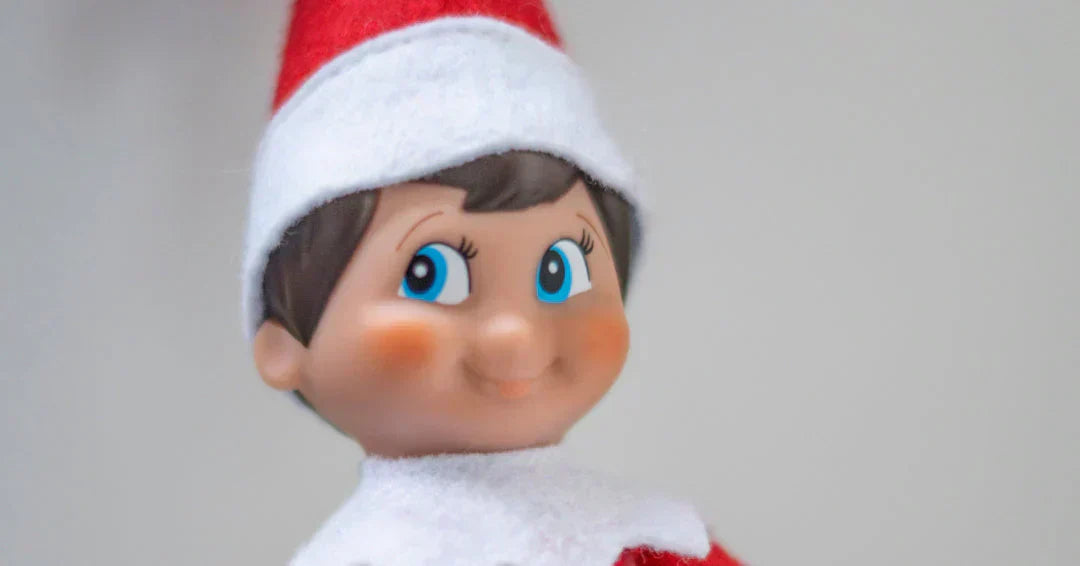Long before their association with Santa Claus, elves have appeared in legends and folklore around the world. The miniature creatures, typically male, are rarely seen despite evidence of them lurking around. The jolly little fellows happily making toys in a North Pole workshop are the most widely recognized elves. Kids will be fascinated to learn that their understanding of these magical beings may not be entirely accurate. Here are some intriguing facts about elves that provide more insight about their origin, behavior, and disposition. You will also learn some fun facts about Santa's elves, who share many of the same quirky attributes as their diminutive counterparts in folklore.

Everything Kids Want to Know About Elves
These miniature creatures are usually associated with Christmastime. Without all of their assistance making toys from scratch, Santa would never be able to deliver his magic to boys and girls all over the world. But they are also known for a bit more than their work as Santa's helpers. In fact, these little buggers can get into a quite a bit of mischief, too! They are known for tip-toeing around at night, while everyone is peacefully sleeping, and leaving some messy surprises behind. So, you may be wondering where the elves originated, how they landed their job in the North Pole, and why they developed such a naughty reputation. Children's books about elves give readers a sneak peak into all the hard work, along with a sprinkling of mischief, these special little people perform all year long. In the meantime, here are some facts about elves to share next time you sit down to read with your little ones.
History and Magical Power of Elves in Folklore
Children are captivated by elves for so many reasons. It's not just about their pointy ears; it's about the fantastical world they represent and the magical powers they possess. Unlike a wizard's spells, an elf's magic is often shown as an inherent part of who they are—a direct result of their connection to the natural world. Kids are even more fascinated by Santa's elves because they represent all the fun, festive, and hardworking magic of the holiday season. These cheerful, tiny beings are the unseen architects of every child's Christmas wish. The idea of a magical workshop at the North Pole, filled with elves busily crafting toys, is a powerful and enchanting image. It turns the vague concept of how presents are made into a vivid and exciting reality. Share these magical facts about elves with kids who want to learn more about their lives.

(1) Elves first appeared in German mythology.
The word elf comes from the Proto-Germanic word albaz, showing that the idea of a supernatural being has a long history in the mythology of Germanic-speaking peoples. The specific traditions and texts of Norse mythology that give us the most foundational descriptions of elves as we know them in fantasy today. In early writings, they were associated with magic, illness, beauty, and seduction. They were considered divine creatures with incredible superpowers.
(2) Elves gained popularity in English fiction.
These creatures popped up in literature after the medieval period. Elves have been a part of English fiction for centuries, but their role and appearance have changed dramatically over time. Initially, writers used the terms "elf" and "fairy" interchangeably, portraying them as small, whimsical, and ethereal beings. At the same time, writers like the Brothers Grimm introduced a more traditional—and sometimes darker—view of elves into popular culture, reminding people that elves were more than just tiny pixies.
(3) Elves are often portrayed as small in stature.
Outside of modern fantasy, the most common image of an elf is a small one, similar to fairies or Santa's helpers. In folklore, elves were often portrayed as tiny supernatural beings, closely related to pixies and fairies. These creatures could be mischievous or helpful, but they were almost always small enough to be hidden from human eyes. The cheerful and industrious helpers of Santa Claus are a direct descendant of this tradition, working away in his North Pole workshop as little beings.
(4) Modern fantasy features tall elves.
The idea of a tall elf in modern fantasy can be traced back to J.R.R. Tolkien. He deliberately moved away from the tiny, pixie-like elves common in Victorian stories. Instead, in works like The Lord of the Rings, his noble elves, the Eldar, are described as tall, graceful beings. In fact, some of his notes suggest that adult male elves were rarely shorter than 6 feet 6 inches. Because Tolkien's work laid the groundwork for the high fantasy genre, his version of the elf—tall, slender, and possessing an ethereal grace—has become the standard in most fantasy novels, films, and video games today.
(5) Elves made their first appearance alongside Santa in the 1800s.
A popular children's magazine published the first picture of them making toys in the workshop. This portrayal sprang from a famous 1823 poem called "A Visit from Saint Nicholas", or as more commonly referred to by the opening line, "Twas the Night Before Christmas." In this poem, Santa describes himself as a "jolly old elf," and later, illustrators popularized the idea of his workshop being staffed by small, cheerful helpers.
(6) Folklore elves have the gift of immmortality.
Almost universally, elves are shown to have incredibly long lifespans, and are often immortal. This extended life is a key trait that defines them in both folklore and modern fantasy. The concept of elves living forever is now a standard feature in fantasy, appearing in everything from tabletop games like Dungeons & Dragons to books and movies. It's this longevity that usually accounts for their profound wisdom, exceptional skills, and sometimes, a certain detached or melancholic demeanor.
(7) Santa's elves live for hundreds of years.
While many fantasy elves are immortal, Santa's elves are typically portrayed as being extremely long-lived, though not always completely immortal. This longevity is crucial to their purpose. Living for hundreds or even thousands of years allows them to master the art of toymaking, gain the wisdom needed to help Santa with the naughty and nice list, and become true experts in all things Christmas. Their long lives are what make them such exceptional helpers, as they can dedicate centuries to preparing for just one magical night.
(8) Folklore depicts the elves' homes as magical kingdoms.
Folklore often portrays elves as living in magical, hidden kingdoms separate from the human world. As the concept of elves evolved, their homes were often described as mystical realms concealed within nature. These places were a sharp contrast to the mortal world. They were located in elaborate halls beneath hills, mounds, or even mountains. Some tales placed these kingdoms deep within ancient forests or in powerful, enchanted spots like hidden meadows and ancient groves.
(9) Santa's elves live in the North Pole.
Santa's elves live with Santa and Mrs. Claus in a magical village at the North Pole. This bustling community, often called Santa's Workshop or Santa's Village, is the center of all Christmas preparations. The village is a vibrant, cheerful place filled with candy canes, gingerbread, and snow. The elves' homes are a series of workshops and dormitories dedicated to various tasks, including making toys, caring for the reindeer, and sorting mail. At the heart of it all is Santa and Mrs. Claus's home, where Santa oversees the entire operation.
(10) Elves have incredible powers in mythology.
Despite their small stance, elves are reputed to have enormous powers that are not always put to good use. The list of their skills, long and varied, includes the ability to enchant humans, cast spells, spread illness, and steal babies. Not all elves are out stir mischief, as some are known for their healing powers and exceptional knowledge of herbal remedies.
(11) Santa's elves have magical abilities, too.
The magic of Santa's elves is more subtle than that of other fantasy elves, as it is entirely focused on their purpose of helping Santa Claus. Their most essential skill is their magical ability to craft toys with incredible speed and precision, allowing them to build millions of toys in a single year—a task that would be impossible for humans. Elves are also often depicted as moving with magical speed and agility, which helps them zip around the workshop to manage the massive challenge of preparing for Christmas. On Christmas Eve, some stories say they can move so quickly and quietly, or even become invisible, to make sure everything is ready for Santa without being seen.




